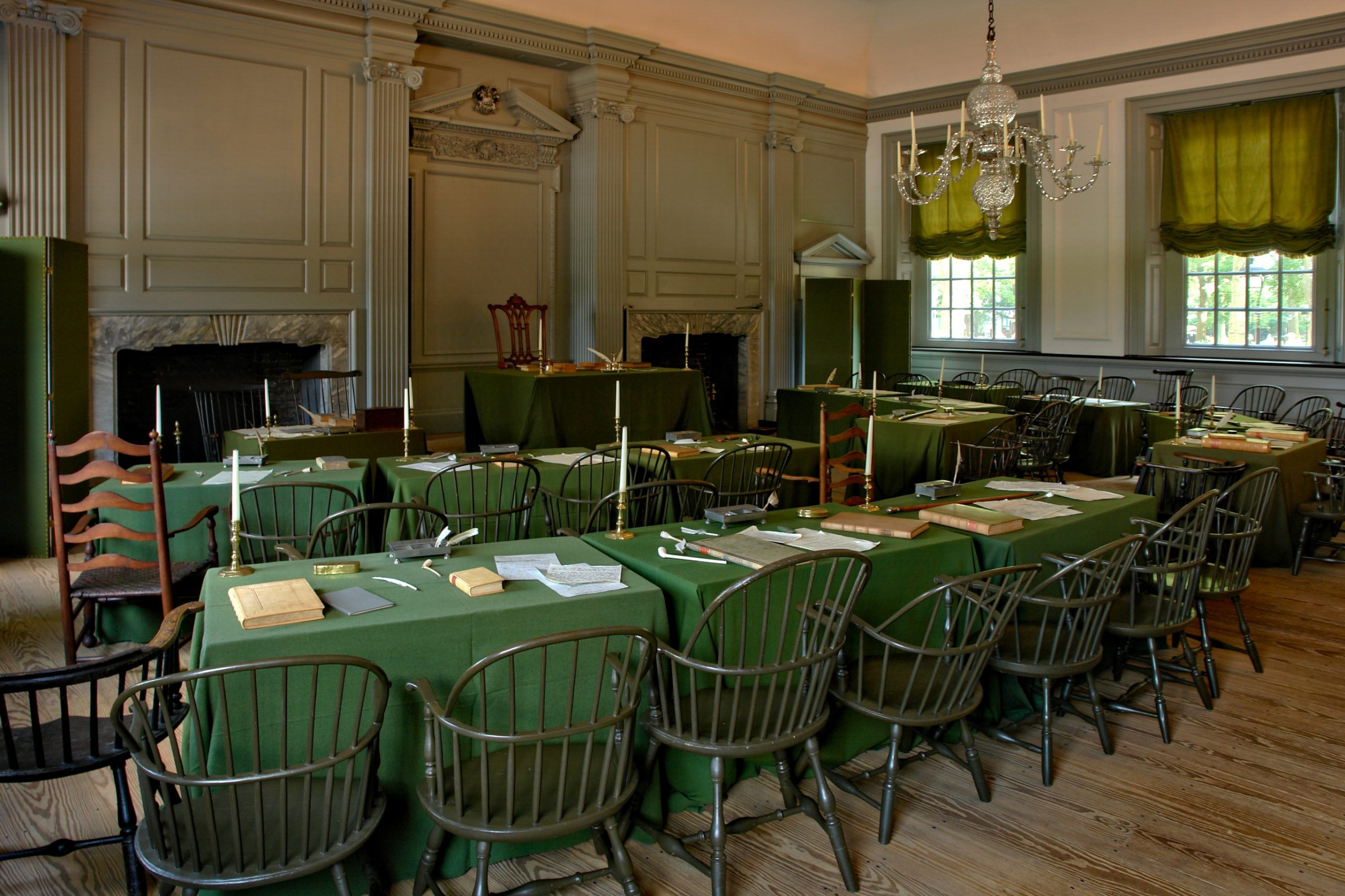The Continental Congress Meets for the First Time
September 5, 1774
The delegates to the first Continental Congress met on this date in 1774 with delegates from twelve colonies (Georgia did not send delegates). The colonies established this Congress in response to the Coercive Acts, also known as the “Intolerable Acts”, which targeted Boston. The meeting of the Continental Congress, in Carpenter’s Hall in Philadelphia, was a powerful show of support and of unity in the colonies.
This first Congress was not intended to be a governing body as they still expected to work things out with the King and continue to be British Colonies. By the agreed upon meeting time of the Second Continental Congress, war had already begun, and the Congress became a de facto national governing body directing war efforts and interacting with foreign powers.
This body of men, many of whom are well-known to us today, helped to unify the American Colony’s efforts for independence and helped create the structure for the United States to succeed. They struggled and learned, made mistake and had successes, and out of it all they secured the blessings of Liberty for us all.
What are you doing to unify and organize your area for freedom from oppressive government?
I believe there are more instances of the abridgement of freedom of the people by gradual and silent encroachments by those in power than by violent and sudden usurpations.
James Madison
Additional reading: John Adams’ notes from the First Continental Congress


